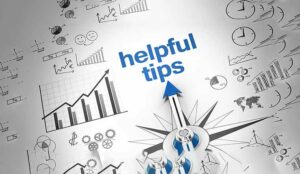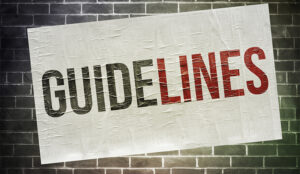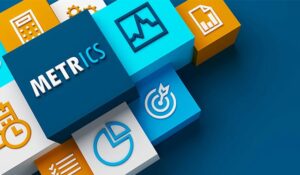Albert Kató at VCC Live shares five contact centre metrics and discusses how each can provide great insights into outbound sales.
Are you about to launch a massive outbound sales campaign? Contacting a large database of potential clients in the span of just a few days can get overwhelming for everyone involved.
To stay on top of it all and make the most out the campaign, you need to track the results.
In this article, we collected some of the most important contact centre metrics to help you achieve your goals without wasting time.
Why Contact Centre Metrics Matter for Outbound Sales?
Imagine building a house. You have a rough idea of the tools and materials you need, and you get started with what you have, without clarifying quantities, stages, potential challenges, and how long each step would take.
Then something unexpected happens, and you’re just standing there, not sure about what you need to buy, who you need to call, and how much more your budget can handle.
Or, you can make a clear plan in advance, so you know exactly how to get started and track whether all goes according to plan.
It’s no different in business.
If this is your first outbound sales campaign, it might take some trial and error to figure out what metrics are right for your business, but tracking them will help you not only with your current campaign but with your future ones as well.
Here are five contact centre metrics we recommend you focus on in your next outbound project:
1. Cost Per Acquisition
Cost Per Acquisition (CPA) is the cost of acquiring one paying customer on a campaign. It’s crucial to clarify in advance how much you’re willing to pay to get a new customer, what your budget is, and whether you’re willing to invest more if needed.
To get the CPA, divide the total cost of your campaign by the number of conversions. There’s no universal number for a good CPA, as every business has different margins and expenses.
The best way to lower your cost per acquisition while keeping your sales high is not by lowering your overall budget, but by improving your conversion rate. The more prospects turn into customers, the lower your CPA will be.
2. Lead Conversion Rate
The conversion rate is the number of conversions divided by the total number of reached prospects. Higher conversion rate equals more success and profit. This metric is also referred to as success rate.
The ratio of conversions can vary depending on the type of outbound sales campaign you’re running. In the case of cold calls, a 1-2% conversion rate is already considered reasonable, but if you’re contacting qualified leads, you should aim for a higher ratio.
Some ways you can improve your conversion rate:
- Know your target market. Create your ideal target customer profile, and create your script around it. This way you can qualify customers already in the first few seconds of the call.
- Write a detailed script for your agents, with multiple scenarios
- Create a clear call-to-action at the end of the conversation
- Be present in multiple channels. Some people hate talking on the phone – some never read their emails
- Follow up with the prospect in their preferred way, at their preferred time.
3. Connection Rate
Connection rate is the number of answered calls divided by the total calls placed. If your connection rate is low, it will take longer to finish your database, because you’ll need to call your prospects again and again before reaching them.
You’ll also be losing time on the several attempts at trying to reach them. This can raise the costs and prolong the campaign.
Your prospects might not pick up the phone because they’re busy, unavailable, or simply ignore unknown callers. If you reach the contact but they’re too busy to talk, ask them what time you can call them back, and set that for the next call-back.
Most predictive diallers (including VCC Live) let you set the availability of your prospects and call them based on that. Besides, the predictive dialler will analyse your contacts’ behaviour and predict the right time, order, and quantity to call.
Unfortunately, this can’t always help. Your connection rate might be low because your contact list is not up-to-date, or simply not valid.
We recommend a test run with the first 100 contacts and see how many calls fail. If the number is high, you might want to update your database, or get a new one.
4. Average Talk or Handle Time
This is time spent on the phone with the prospect. Agents might need time to prepare for the call (known as ‘pre-work’) and create a memo after (called ‘wrap-up time’). In such cases, it’s better to take these seconds into consideration and look at the average handle time (AHT) instead.
It basically shows you how long an agent spends on one case, while unable to handle other work. Your predictive dialler takes this into account when calculating the most ideal dialling speed, and you also need it to plan accordingly.
There might be differences between agents. Listen to a few calls to see what makes a difference. Some of your agents might type slower, spend more time on hold or in wrap time, or need more time with the client.
Mentoring and a well-written script can help your agents communicate more effectively and concisely, and prepare for different situations.
Let your advisors listen to examples of good AHT to learn what you expect and what they can do to improve. Make information easily accessible so no time is wasted on searching.
Another way to increase AHT is to create a fun game around the project.
For example, the agent with the lowest AHT who closes the most prospects gets a gift, or the team is treated to a dinner when they achieve the weekly goal!
5. Average Wait Time
Average wait time (AWT) is the average time the agent has to wait on the dialler between calls. A few seconds of wait time may not seem much, but if it happens between every call, it adds up.
The shorter your average waiting time, the more calls your agents could complete if you optimize this call centre metric.
If you haven’t yet, be sure to switch to predictive dialling. The dialler starts multiple calls at the same time, maximizing the odds of someone picking up the phone on the other end.
It only connects the call to the agent after the prospect picks up, so there’s no time wasted on unanswered attempts. On top of this, the dialler also monitors how quick the agent finished their calls so they doesn’t need to wait.
You can optimize your AWT even further by fine-tuning your predictive dialler settings.
If your average waiting time still seems too high, check your database: you might be running out of callable numbers!
What Contact Centre Metrics Do You Rely On?
Monitoring the right call centre metrics can greatly improve the success of your outbound sales campaign.
As a call centre manager, you need to be on top of monitoring and adjusting these metrics for the best result.
Once you have a good amount of data, you can create an outbound sales template that you can rely on long term, making your life a bit easier.
Author: Guest Author
Published On: 16th Mar 2021
Read more about - Guest Blogs, VCC Live















